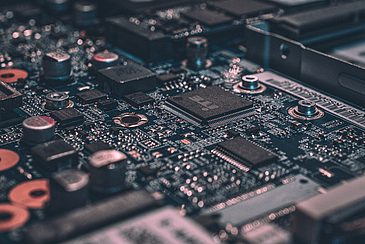Processors are being installed in more and more devices: from notebooks and cell phones to dictation devices and satellites. According to Drechsler, there are a lot of electronics even in cars today. “There are over 250 microprocessors with millions of lines of programming code in a high-end car.” The problem is that the manufacturing of computer processors has now reached the physical limit. “Processors were first developed in the 1970s. At the time, Intel cofounder Gordon Moore predicted that twice as much data would fit on a chip every 18 months. By now, we are at ten nanometers and cannot build something smaller at a reasonable cost. We are at a turning point here,” explains Professor Drechsler. Computer architecture must move in a new direction.
Simultaneous Storage and Processing
One solution could be so-called logic-in-memory computing, says Drechsler. “What’s new is that computers can store and process data in their memory simultaneously. This is usually a separate process.” The boundary between memory and calculation unit is therefore removed. “This is to be seen as a revolution in the field of architecture, since it removes the division that has existed for decades.”
The DFG project “HDL-basierte Synthese und Verifikation für programmierbare Logic-In-Memory Architektur” (HDL-based Synthesis and Verification for Programmable Logic-In-Memory Architecture) deals specifically with the question of how such circuits can be rebuilt. “We’re not building the chip. We’re building the production line.” To this end, Professor Drechsler and his team carry out computer simulations: “In the 1970s, the blueprints of the chips were still drawn on the board.” Today’s processors, on the other hand, consist of over ten billion components, as the computer scientist describes, which is equivalent to ten million 1,000-piece puzzles. In order to construct the new chips, the scientists have to extend existing programming languages with new commands.
Powerful and Energy-Saving Devices
In addition, the researchers aim to be able to carry out verification during production. “We not only want to believe that the chip works, but we want to prove it with formal methods, too. In this way, we can guarantee the correct and safe functioning of the entire system.” The aim of the new computer architecture is to develop high-performance devices that consume little energy. Due to their more compact design, they could be used in the most diverse places within the Internet of Things and also be constructed more securely. This is very important nowadays, especially with regard to hacker attacks.
Additional Information:
http://www.informatik.uni-bremen.de/agra/ger/bereich.php
www.uni-bremen.de
Contact:
Professor Rolf Drechsler
Computer Architecture working group
Faculty 3
Phone.: +49 421 218-63932
E-mail: drechslerprotect me ?!uni-bremenprotect me ?!.de

